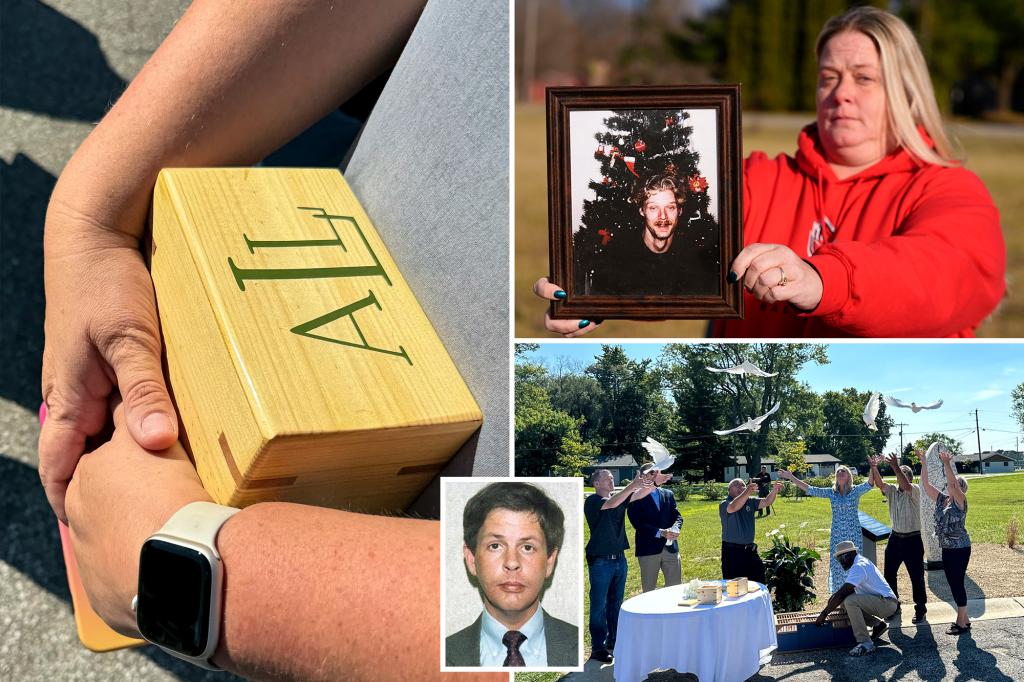The Unmarked Graves of Fox Hollow Farm: A Renewed Quest for Identity
In the quiet suburbs of Westfield, Indiana, lies a chilling legacy. Fox Hollow Farm, once the sprawling estate of Herbert Baumeister, harbors a dark secret. Beginning in 1996, investigators unearthed thousands of human bones and bone fragments scattered across the property, grim evidence of a suspected serial killer’s reign of terror. While Baumeister took his own life before facing justice, the identities of his victims remained elusive for decades, leaving families in agonizing limbo. Now, a dedicated team of investigators, scientists, and genealogists are employing cutting-edge DNA technology to finally give names and faces back to these forgotten souls.
The scale of the horror at Fox Hollow Farm is staggering. Initial estimates suggest at least 25 victims were buried on the 18-acre property, with evidence including over 10,000 bones and bone fragments, as well as chilling artifacts like handcuffs and shotgun shells. Baumeister’s modus operandi, investigators believe, involved luring men he met at Indianapolis gay bars back to his home while his family was away. The subsequent discovery of the remains confirmed the darkest suspicions. By the late 1990s, eight victims were identified using dental records and early DNA technology. However, the identification efforts stalled due to funding limitations, leaving the remaining victims nameless and their families without closure.
The renewed push for identification began with a simple Facebook message. In late 2022, Eric Pranger contacted Hamilton County Coroner Jeff Jellison, seeking answers about the fate of his cousin, Allen Livingston, who disappeared in 1993. Livingston’s family had long suspected he was one of Baumeister’s victims. Moved by the family’s plea, Jellison assembled a multi-disciplinary team including the Indiana State Police, the FBI, the University of Indianapolis’ Human Identification Center, local law enforcement, and a private forensic genetic genealogy company. Their mission was to finally identify the remaining victims through meticulous DNA analysis.
The process of extracting usable DNA from the fragmented remains is a painstaking and complex endeavor. Scientists at the Indiana State Police Laboratory carefully selected promising bone fragments, freezing them with liquid nitrogen and pulverizing them into a fine powder. Using heat and chemicals, they were able to extract DNA profiles, which were then compared to DNA samples provided by relatives of missing persons. This meticulous work paid off in October 2023, when Allen Livingston was finally identified as the ninth victim, bringing a measure of closure to his family, particularly his ailing mother, who passed away shortly after the identification.
While Livingston’s identification marked a significant milestone, the quest to identify the remaining victims continues. Approximately 40 DNA samples have been submitted by families hoping to find their missing loved ones among the remains. These samples are entered into the FBI’s CODIS database, dedicated solely to missing person identification, not criminal investigations. Investigators are actively seeking more DNA samples from relatives of men who disappeared across the U.S. between the mid-1980s and mid-1990s, acknowledging that some victims may have been traveling through Indianapolis at the time of their disappearance.
The ongoing analysis of the remains presents significant challenges. Many of the bones are severely degraded, having been crushed and burned, making DNA extraction extremely difficult. Dr. Krista Latham, director of the Human Identification Center, emphasizes that poorly preserved fragments are being held back in anticipation of future advancements in DNA technology that may eventually unlock their secrets. Moreover, the marginalized status of many of the victims, potentially estranged from family or ostracized due to their sexuality, adds another layer of complexity to the identification process. Their disappearances may have gone unnoticed at the time, further hindering identification efforts.
The dedication of the investigators and scientists is evident in their meticulous approach. Jellison has obtained DNA reference samples from relatives of seven of the eight men initially identified in the 1990s, while efforts to locate relatives of the eighth victim, an adoptee, are ongoing. As remains are identified, families have the option to have them cremated and interred at a newly dedicated memorial in Westfield, a poignant tribute to the victims. The memorial, featuring a plaque with the names of the identified victims and space for future additions, stands as a testament to the enduring quest for justice and closure. The ongoing work underscores the importance of giving a voice to those who were silenced, ensuring that the marginalized are not forgotten in death.

